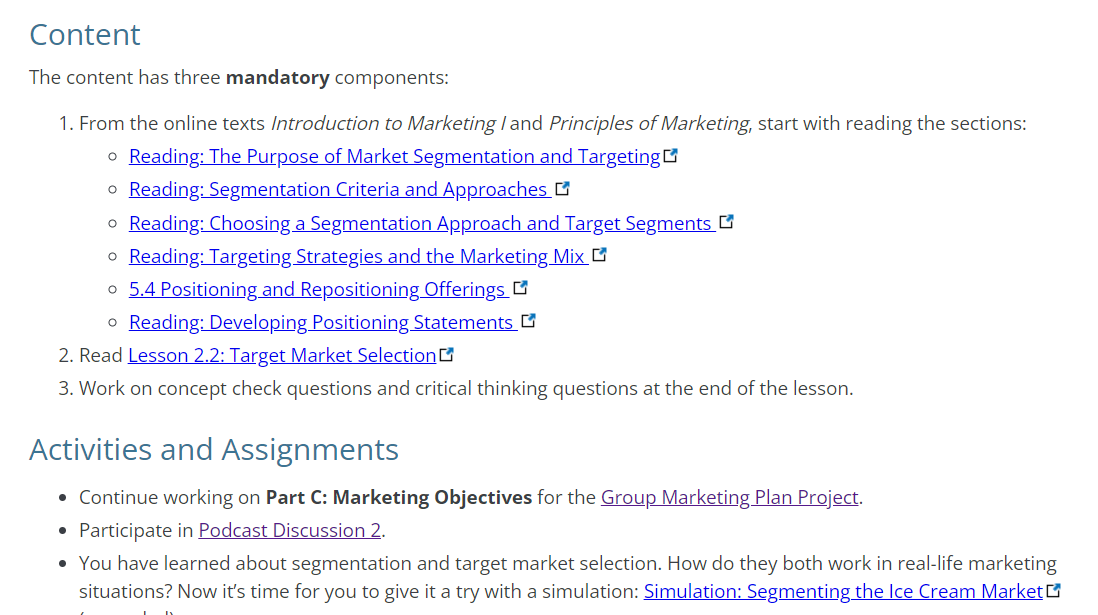
This article is one of a series celebrating open scholarship during Open Access Week. It is brought to you by the Open Scholarship Committee.
When Dr. Olivia Mesta was asked to redevelop MGMT 244/ARBUS 302: Principles of Marketing for an online offering in 2021, she decided to take the opportunity to “think outside the box.”
Having taught the course before, she wanted to explore the possibility of providing her students with a new perspective, or even a few new perspectives. In order to do this, she used Open Educational Resources (OER).
In previous iterations of the course, a conventional, commercially-produced textbook had been used. However, as Mesta notes, with a conventional textbook instructors are limited to the perspective of the author or authors, and, more specifically, to the particular examples they have chosen. Using one or two chapters from multiple conventional textbooks is often not feasible because of concerns around copyright and cost. OER, which provide material to be used and/or adapted (depending on the license) free of cost, provided the possibility for introducing new perspectives and, more to the point, new examples.

Dispensing with a conventional textbook for the online version of MGMT 244, Mesta adapted materials from two open textbooks — Principles of Marketing, published by the University of Minnesota Libraries Publishing through the eLearning Support Initiative, and Introduction to Marketing 1 from Nova Scotia Community College (NSCC) and Lumen Learning — as well as her own lecture notes to present core concepts.
Mesta developed assessment materials herself, since these open textbooks do not have test banks like many conventional textbooks. Podcasts and other open resources were used to provide both illustrative examples and opportunities for student participation and active learning. Mesta notes that this approach is especially well-suited for the subject of marketing, as it relies less on theory and more on real-life examples.
Dr. Olivia Mesta

Screenshot of MGMT 244.
While the online version of the course used only open or web-based materials, Mesta notes that OER can also work alongside conventional textbooks because they can supplement established concepts with different perspectives and examples, thereby adding a sense of “richness” to the concepts presented.
One of the major considerations when using OER in a course is the amount of time it can take to locate them, to vet them for accuracy, quality and currency, and to adapt them to the needs of the particular course.
For this reason, Mesta credits the course release she received from her home department as a crucial factor in her use of OER in the course, in addition to the assistance provided by the Centre for Extended Learning. Mesta states that CEL’s support was essential not only in locating and working with OER, but also in ensuring that the materials remain available and relevant for future iterations of the course.
While OER might not suit all subject areas, Mesta recommends their use, noting that there are “really good resources available.”